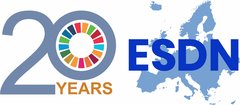What is the backdrop for developing the Agenda 2030 Toolbox?
The 2030 Sustainable Development Strategy (2030 SDS) sets out the guidelines for the Federal Council’s sustainability policy and establishes sustainable development as an important requirement for all federal policy areas. As a transversal strategy, it formulates priorities and sets goals for the period up to 2030. All federal offices are called upon to contribute to the implementation of the 2030 Agenda and the 2030 SDS within their areas of responsibility and to integrate the principles and goals into their regular planning, budgeting, and policy management processes.
Why was the Agenda 2030 Toolbox for cantons and municipalities developed?
Switzerland is a federally organized country and sustainable development is therefore a joint task for all levels of government. Successful implementation of the 2030 Agenda can only be achieved through coherent cooperation between the various stakeholders. The cantons and municipalities are primarily responsible for many of the policy areas enshrined in the 2030 Agenda and therefore have an important contribution to make. At the local level, cities in particular also have an important role to play.
Institutional cooperation and targeted logistical, technical, and financial support for the actors involved are key elements of on the Confederation’s sustainable development policy. This is why the federal government has launched the 2030 Agenda Toolbox for cantons and municipalities in 2022.
Switzerland's 26 cantons and 2,136 municipalities all have their own specificities and characteristics, but essentially face the same challenges when it comes to implementing the 2030 Agenda.
The toolbox supports all cantons and municipalities in their pursuit of the 2030 Agenda. It provides a collection of measures and examples of how cantons and municipalities are already implementing the 2030 Agenda for Sustainable Development to achieve the 17 Sustainable Development Goals. In addition to background information, it provides numerous innovative management tools to strengthen sustainability. The Federal Office for Spatial Development (ARE) developed the toolbox together with experts from the cantons and municipalities, the Network of Cantonal Sustainability Offices (NKNF), the Association of Swiss Communes (SGV) and the Swiss Association of Cities (SSV), as well as other stakeholders.
Why was the Agenda 2030 Toolbox for businesses developed?
Businesses can and must make a significant contribution to the implementation of the 2030 Agenda because of their significant economic, environmental, and social impact.
The requirements for sustainable corporate management are constantly increasing. Not only for large multinational companies, but also for the approximately 610,000 small and medium-sized enterprises (SMEs) and their more than 4.5 million employees that characterize the Swiss economy. In order to meet these challenges, it is important to analyze not only the obstacles, but above all the enormous opportunities that arise for the business model. By operating in a sustainable manner, companies can conserve resources, reduce greenhouse gas emissions, and thus make their contribution to combating the climate crisis. Doing business sustainably also has many benefits for the companies themselves. For example, sustainability pays off financially by reducing energy and raw material costs, enabling companies to improve their competitiveness and increase their productivity. In addition, sustainable business practices allow companies to meet the changing consumer demands and tap into new markets. Finally, sustainable companies are attractive employers, helping them to compete in times of skills shortages.
In this context, the ARE recently launched its second Agenda 2030 Toolbox, this time for businesses.
The toolbox for businesses provides motivation, support, and guidance for companies on their path to greater sustainability. The toolbox presents sector-specific sustainability goals and appropriate measures to achieve them. It also provides practical examples of companies that have already embarked on the path to greater sustainability. Finally, it provides an overview of key tools, standards as well as support and funding programs.

